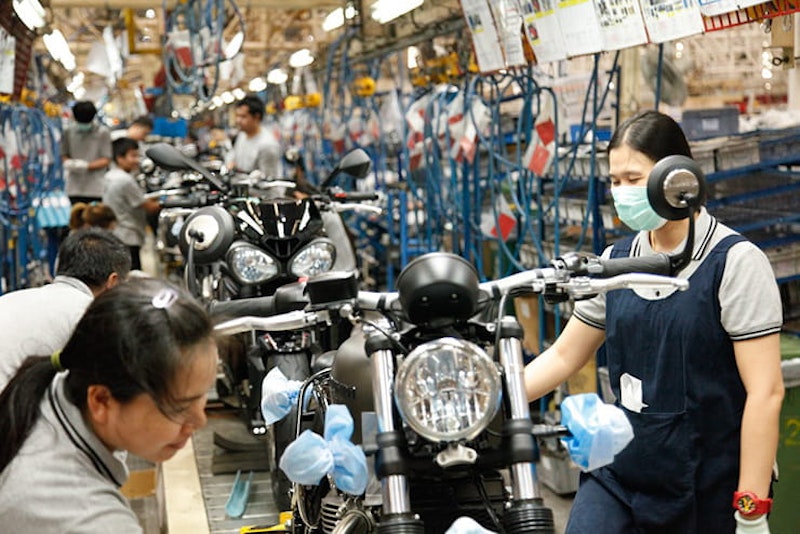
How to Paint a Motorcycle Tank: Tips and Techniques for Success
Share
Painting a motorcycle tank can be a rewarding yet challenging endeavor. For Tech Professionals and enthusiasts alike, mastering the art of motorcycle painting merges creativity with technology. This article aims to provide a detailed, step-by-step guide on how to paint a motorcycle tank while ensuring the best possible results.
Whether you're revamping your ride or fixing scratches, knowing the right techniques can make a significant difference. Let's dive into the essential steps required for a successful paint job.

Why Paint Your Motorcycle Tank?
There are several reasons why someone might want to paint their motorcycle tank. The reasons range from simply wanting to change the color, covering up scratches, or even personalizing the bike with custom artwork. A well-painted tank not only enhances the aesthetic appeal of the motorcycle but also protects the underlying metal from rust and other environmental factors.
Choosing the Right Colors and Paint Types
When deciding on colors for your motorcycle tank, consider the overall look and feel you want to achieve. The color palette can dramatically change the aesthetics of your bike. Additionally, the type of paint you use is equally critical. For motorcycles, it's advisable to use either acrylic enamel or urethane paint. These types provide a durable finish that can withstand the elements.
For more detailed information on the types of paints available for motorcycles, check out this [Custom and Specific Paints](https://www.stardustcolors.co.uk/content/268-specificity-motorcycle).
Gather Your Tools and Materials
Before you start, ensure you have the necessary tools and materials on hand. The essentials include:
- Sandpaper: Various grits, from coarse for initial sanding to fine for a smoother finish.
- Primer: A good-quality primer helps paint adhere better.
- Paint: Acrylic enamel or urethane paint in your chosen color.
- Clear Coat: For added gloss and protection.
- Masking Tape: To cover areas you do not want to paint.
- Respirator: Always prioritize safety when working with strong fumes.
Having these tools ready will streamline the painting process and ensure you accomplish the job efficiently.
Preparation Steps Before Painting
Preparation is key to a great paint job. Heres how to do it:
- Remove the Tank: If you're painting the tank, its best to remove it from the motorcycle to avoid overspray on other parts.
- Clean the Surface: Ensure the tank is free of dirt and grease. A thorough cleaning prevents any imperfections in the paint job.
- Sand the Surface: Sanding the tank smooths out imperfections and ensures that the paint adheres properly. Start with coarse sandpaper and finish with finer grit.
- Mask Off Areas: Use masking tape to cover areas that should remain paint-free.
Preparing the tank thoroughly enhances your chances of a successful outcome when painting.
Step-by-Step Guide to Painting the Motorcycle Tank
Now that you have everything in place, its time to paint the tank:
- Apply Primer: Spray the primer in light, even coats. This creates a perfect base for the paint to adhere to. Allow it to dry completely before moving on.
- Spray Paint: Apply your chosen color using a spray gun or aerosol can. Make sure to spray in thin layers to avoid runs. Allow each layer to dry before applying the next.
- Apply Clear Coat: Once your paint has dried, protect your hard work with a clear coat. This not only adds shine but also protects the paint from scratches.
For visual guidance and detailed instructions, consider checking the tutorial on [Painting a Motorcycle Tank](https://www.instructables.com/Custom-Painting-a-Motorcycle-Tank-with-Aerosol-Can/).
Finish and Reassemble Your Motorcycle
Once all layers are fully dry, carefully remove the masking tape. Inspect your work and touch up any spots if necessary. Lastly, reassemble the tank back onto the motorcycle. Ensure all screws and bolts are correctly tightened to prevent any issues on the road.

Tips for a Successful Paint Job
To ensure the best results in your motorcycle painting project, consider the following tips:
- Work in a well-ventilated area to minimize fumes.
- Practice on a scrap piece of metal to get a feel for the spray technique.
- Be patient; allow sufficient drying time between coats.
- Seek inspiration from custom paint jobs online and plan your design ahead.
FAQ Section
How long does it take to paint a motorcycle tank?
The time it takes can vary, but typically, you should allocate a full day for preparation, painting, and drying. Allow for additional time for any touch-ups.
Can I paint a motorcycle tank without removing it?
While it is possible, it is not recommended. Removing the tank allows for a more precise paint job and reduces the risk of overspray on other motorcycle parts.
What safety precautions should I take while painting?
Always wear a respirator, gloves, and protective eyewear. Ensure youre in a well-ventilated area to avoid inhaling fumes.
If youre interested in further understanding the costs involved in motorcycle painting, you can refer to this article on [Cost of Painting a Motorcycle](https://iottechnologies.io/blogs/motorcycle-paint/how-much-does-it-cost-to-paint-a-motorcycle).
By following these methods and techniques, youll gain the skills needed for a flawless motorcycle paint job, adding personal touches that enhance the value and aesthetics of your bike. Happy painting!
